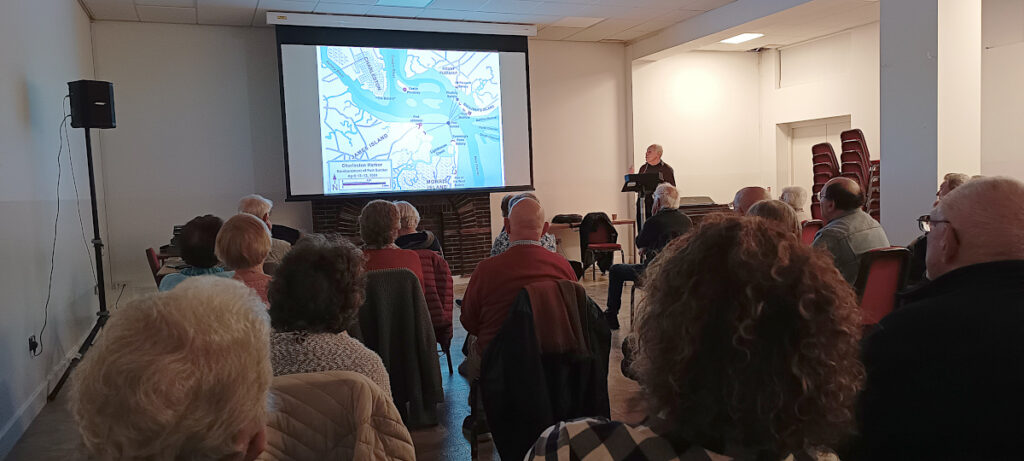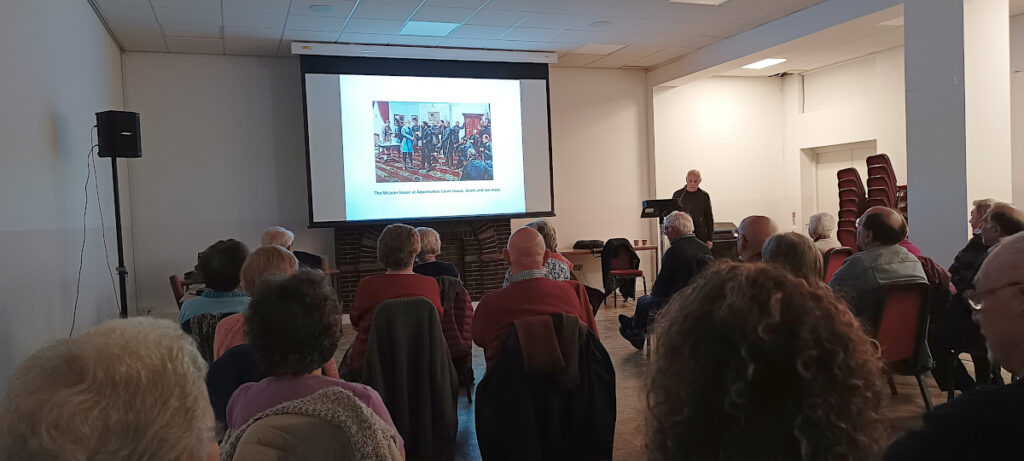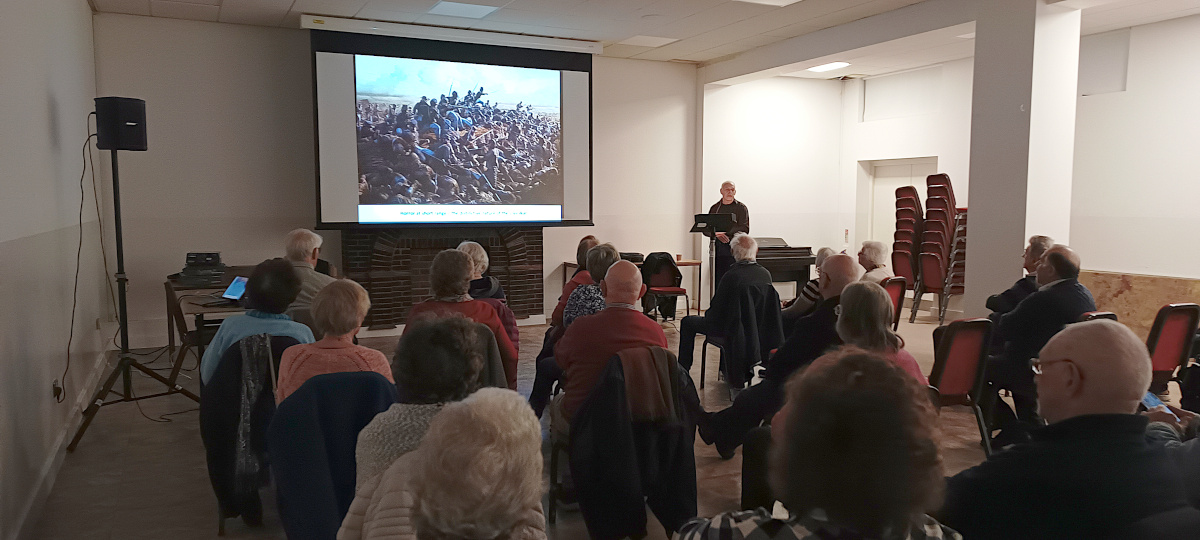Our course of lectures on the American Civil War continued on Friday 28 April 2023 with a look at the conduct of the war itself. Our lecturer, Harry Goldstein who has a postgraduate qualification in American History, described the war as Horror at Short Range, showing a famous painting. This was face to face fighting, as in medieval times but with 19th Century firearms and weapons. There were some trenches, but mostly it was shooting at the other side. More people died in the American Civil War than in all the other wars fought by Americans added together.

The conflict proper started at Fort Sumter, near Charleston Bay, on 12 April 1861 and continued until the Confederate Army surrendered at Appomattox in April 1865, and the fleeing Confederate President Davis was captured the following month. In 1861, an estimated 1 million men faced each other along a 1200 mile line stretching from Virginia to Missouri.
Harry took us through the main battles, and why each one was fought and over what sort of ground. There was timidity amongst some leaders, and there were plenty of promotions and demotions of leaders. We also learned more about General Sherman, about General Ulysses S Grant, and General Robert E Lee. There was more about Jackson, McClellan and Pickett.
There was destruction of property in abundance, but eventually the forces of the North were able to corral the Confederates, and surrender was inevitable. The surrender did respect the requests of General Robert E Lee, and the Confederate soldiers were allowed to leave the battlefield with their horses provided they signed a parole indicating they would never bear arms against the United States again.

Next time, on 26 May 2023, we will learn about the consequences of the American Civil War for the United States.

